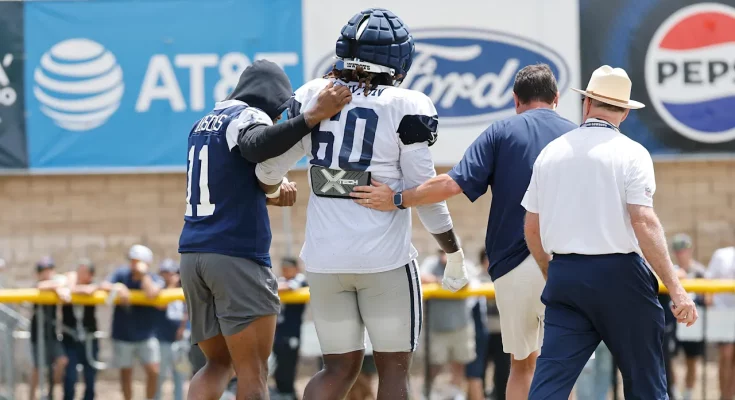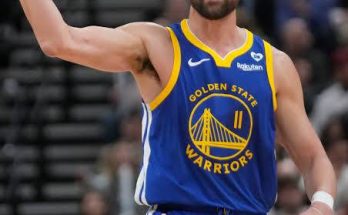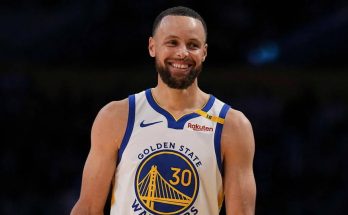The energy at Los Angeles Chargers training camp took a sudden shift when wide receiver Jalen Guyton, a key piece in the team’s offensive rotation, left practice early due to an apparent injury. It was a scene that left players, coaches, and fans holding their breath. Just when everything seemed to be clicking and the Chargers were beginning to gel in a high-stakes preseason buildup, this unexpected development threw a shadow of concern across the sunlit field in Costa Mesa.
Guyton had been having a solid camp so far, gradually working his way back from the ACL injury that sidelined him for much of the previous season. The coaches had taken a cautious but optimistic approach with his reps, slowly ramping up his participation to make sure he was both mentally and physically ready to contribute at full speed again. It was clear they saw his deep-threat ability as something essential to unlocking their vertical offense—especially with Justin Herbert’s cannon arm and the need to stretch the field opposite veterans like Keenan Allen and the newly signed Ladd McConkey. But just as the optimism was cresting, Guyton pulled up on a route, gingerly grabbed at the back of his leg, and limped off to the medical tent under his own power.
Although he wasn’t carted off the field and there was no immediate announcement from the team on the extent of the injury, the visual alone sent a jolt through the sideline. Practice came to a temporary halt. Several players walked over to check on him, and coaches conferred quietly as the training staff tended to the receiver. What made the moment even more dramatic was who stepped in next: Trey Pipkins, an offensive tackle by trade, lined up for a brief set of reps to simulate depth adjustments as the coaching staff scrambled to rework formations and offensive schemes. It was more a procedural shift than a long-term solution, but the improvisation emphasized just how disruptive Guyton’s absence might become—even for a short period.
While it might seem unusual for Pipkins, a lineman, to enter a conversation about a wide receiver’s injury, it speaks to the domino effect an absence can cause. Pipkins’ appearance wasn’t about catching passes; it was about shifting personnel around to test protection schemes and block alignments in the event of more tight end-heavy packages or formation changes. Injuries at skill positions often force ripple effects through other units, and the coaching staff was clearly testing contingency plans in real-time.
For Guyton personally, this couldn’t come at a more unfortunate moment. After working diligently through rehab and finally beginning to resemble the dynamic playmaker the Chargers relied on in 2020 and 2021, this setback—regardless of severity—interrupts his critical rhythm-building stage. This offseason was supposed to be the one where he proved he was fully back and deserved not only a roster spot but also meaningful targets in a revamped Chargers offense. With Kellen Moore gone and Greg Roman implementing a more balanced, possibly run-heavy attack, receivers were already fighting for defined roles in a more conservative scheme. Guyton, with his speed and prior chemistry with Herbert, seemed like one of the players best positioned to benefit from the uncertainty.
Now, instead of refining his timing with Herbert or solidifying his route tree, Guyton’s focus will return to recovery and medical evaluations. The team will undoubtedly perform scans and assessments in the coming days to determine the exact nature of the injury. Hamstring or soft-tissue issues are common during camp, especially for players returning from major injuries. However, if it’s related to his surgically repaired knee, that could have long-term implications not just for his season, but for his career.
Herbert, visibly frustrated but composed, addressed the media later in the day. He offered his support to Guyton and emphasized the team’s next-man-up mentality. “Jalen’s a warrior,” Herbert said. “He’s worked his tail off to get back to this point. We’re hoping for the best. But the whole room has to be ready. We’ve got depth, we’ve got options. But you hate to see a guy like that go down when he’s been putting in so much work.”
Indeed, the Chargers have depth, but not depth with the same explosive element Guyton brings. Quentin Johnston is still developing into a reliable option, and while McConkey offers versatility, he’s more of a technician than a burner. Joshua Palmer has shown flashes but hasn’t consistently been able to separate from defenders in the vertical game. That’s why Guyton’s role—though not always glamorous or high-volume—was so strategically vital.
There’s also the issue of timing. The Chargers are only a couple of weeks away from their first preseason game, and now Greg Roman will need to reevaluate how he distributes snaps in both practice and game reps. With Guyton’s status uncertain, bubble players will see an opportunity. Names like Derius Davis, Keelan Doss, and undrafted rookie Brenden Rice—son of Jerry Rice—will suddenly become far more intriguing. The coming practices and preseason games will now serve as proving grounds, not just for wide receiver depth, but for how adaptable this Chargers offense really is when adversity strikes.
From a roster management standpoint, this is where GM Joe Hortiz and the front office will be tested. If Guyton’s injury ends up being more than minor, the team may have to explore free agent options. There are still veteran receivers on the market—guys like Jarvis Landry or even Julio Jones—who, while past their primes, offer experience and reliability. However, those are short-term patches, not long-term solutions. The Chargers will likely hold off on any drastic moves until they get clarity on Guyton’s prognosis.
Fans, understandably, are already speculating. Social media buzzed with slow-motion replays of the incident, medical guesswork, and optimism mixed with dread. Chargers supporters, well-acquainted with the franchise’s injury woes over the years, are hoping this is just a minor setback rather than the start of another string of bad luck. Over the past few seasons, key players like Derwin James, Joey Bosa, and even Herbert have all missed time due to injury, often derailing promising starts.
There’s a mental toll to all this, too. Players see one of their own go down and it serves as a sobering reminder that every snap comes with risk. It’s part of the grind of training camp, where the tension between intensity and preservation always teeters on a knife’s edge. Coaches preach competition and full-speed execution, but also urge caution, especially with players still easing back from past injuries.
This episode may also influence how the Chargers handle other returnees from injury. Don’t be surprised if certain veterans get reduced workloads in the coming days or if practice becomes slightly more walkthrough-oriented, at least temporarily. The coaching staff knows that keeping their weapons healthy heading into the season is paramount. As one anonymous assistant was overheard saying on the sideline, “You can’t win Week 1 in July, but you can lose it.”
Meanwhile, for Guyton, the immediate priority is recovery, evaluation, and rest. Hopefully, it’s just a minor tweak—something that requires a few days of rest and nothing more. But in the razor-thin margin world of NFL rosters and preseason battles, even a short absence can reshape a career arc. This isn’t just about fantasy football depth charts or schematic adjustments; it’s about a man who’s worked relentlessly to regain trust in his body and find his place again in a fiercely competitive environment.
If there’s a silver lining, it’s that Guyton has overcome adversity before. As an undrafted free agent who had to grind for every target, every snap, and every roster spot, he’s no stranger to uphill battles. He fought his way onto the roster once, became a trusted vertical threat in a star-studded offense, and battled through a brutal rehab process. Now, if needed, he’ll do it again.
But for now, all eyes are on the Chargers’ medical updates. Until the team speaks, speculation will swirl, and so will concern. Because in the heat of training camp, sometimes the biggest story isn’t a highlight play or a breakout rookie. Sometimes, it’s the quiet exit of a player who was just beginning to shine again—and the echoes of what that absence might mean.



